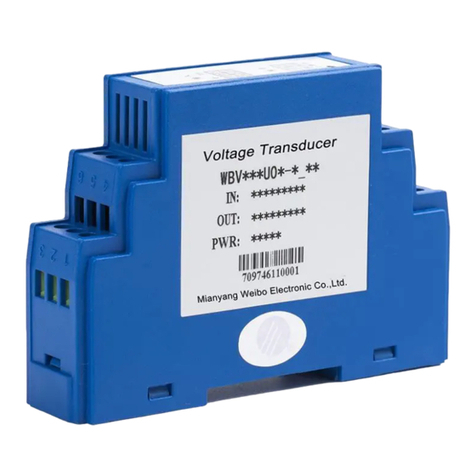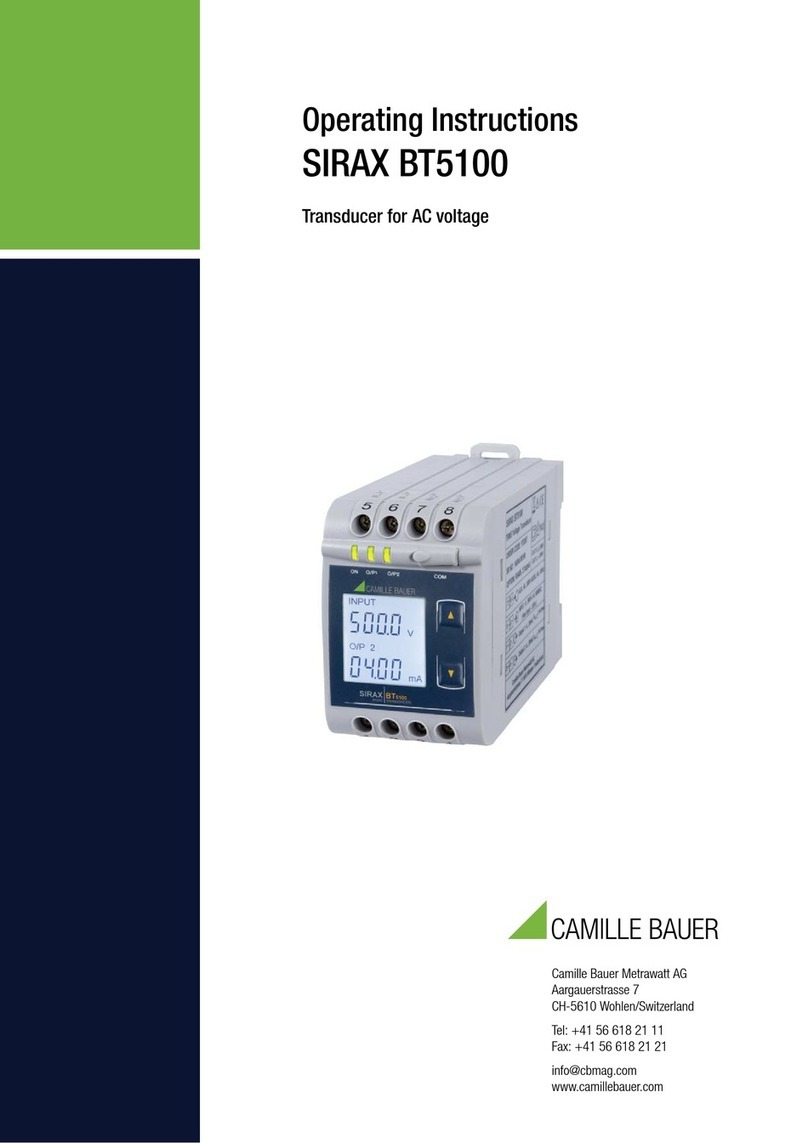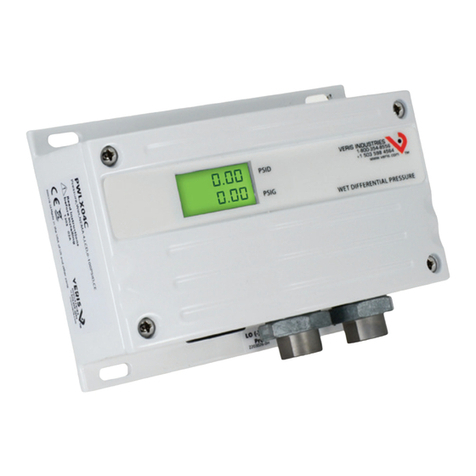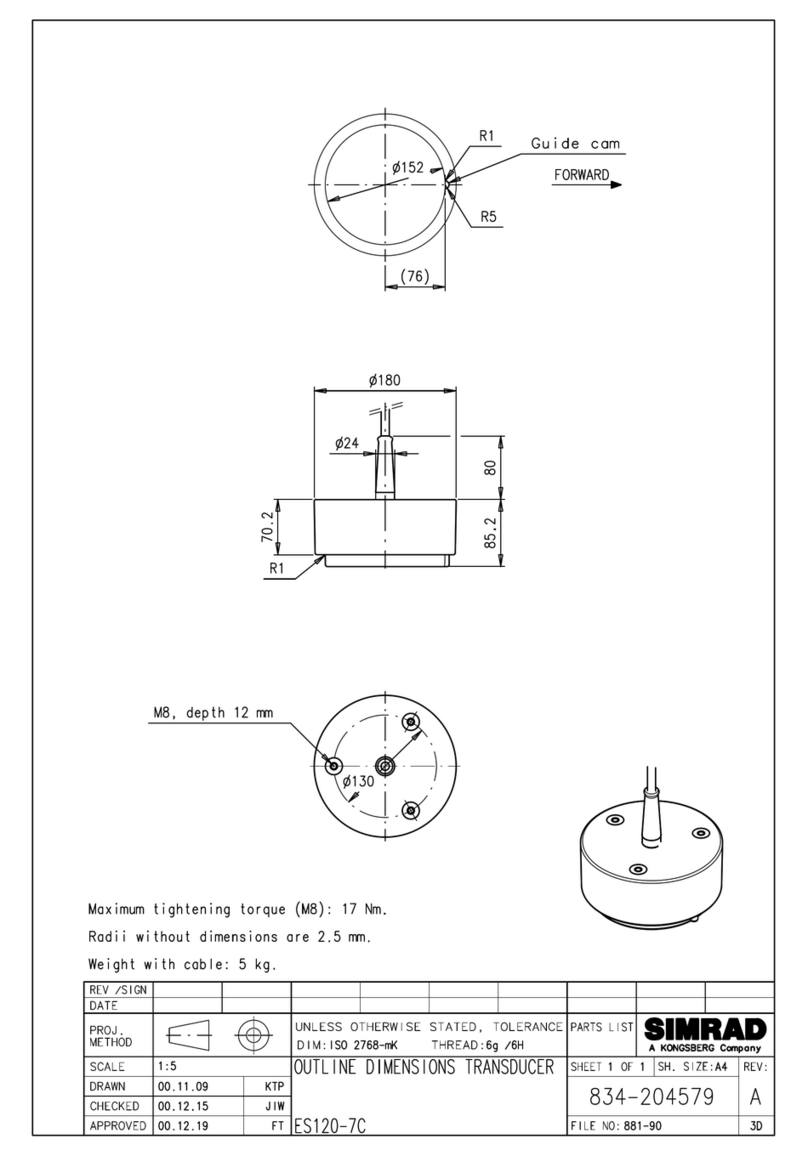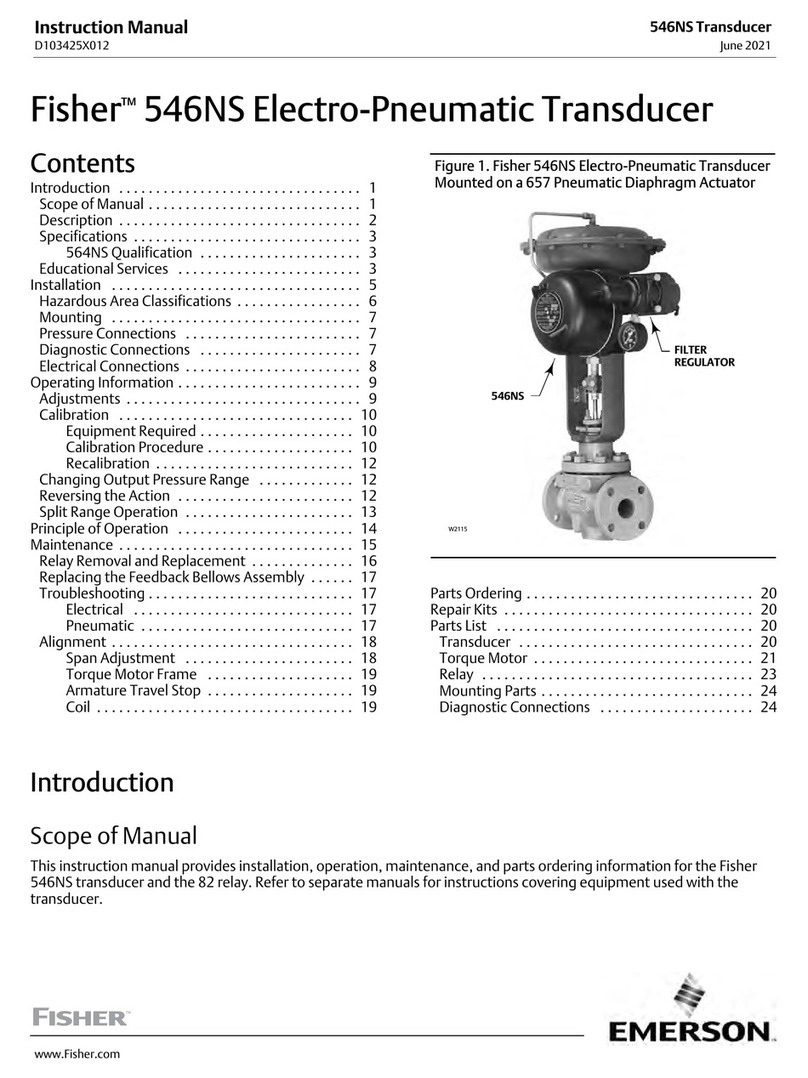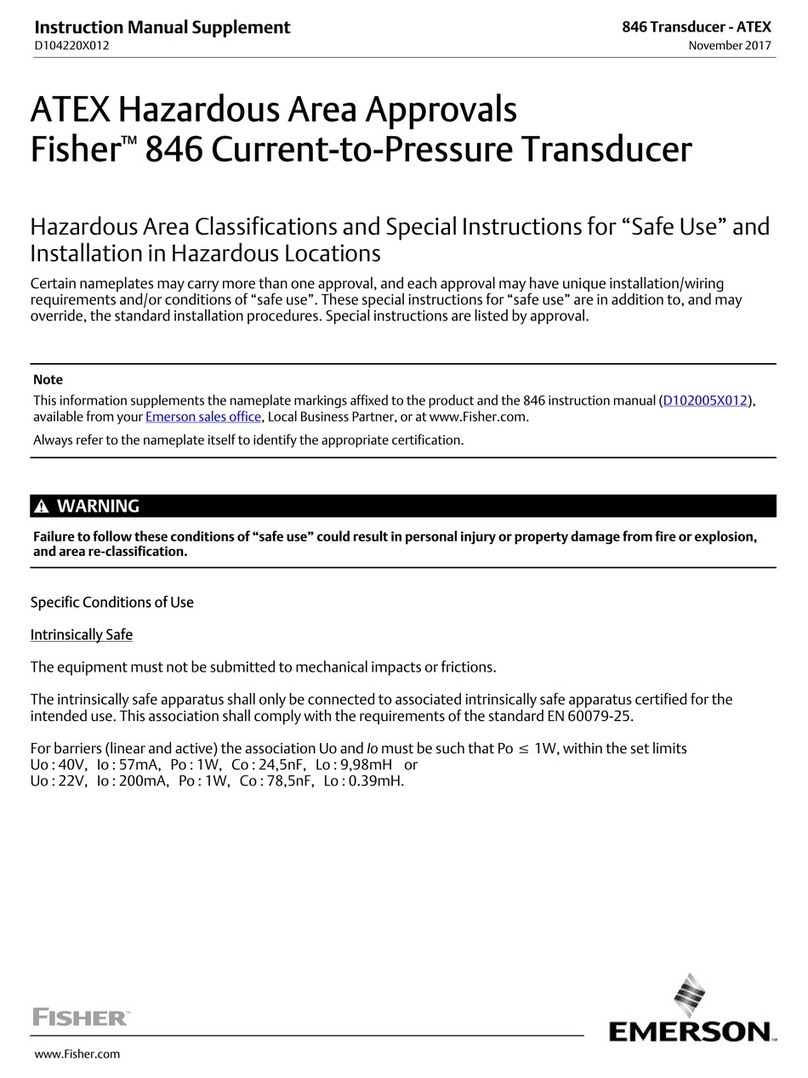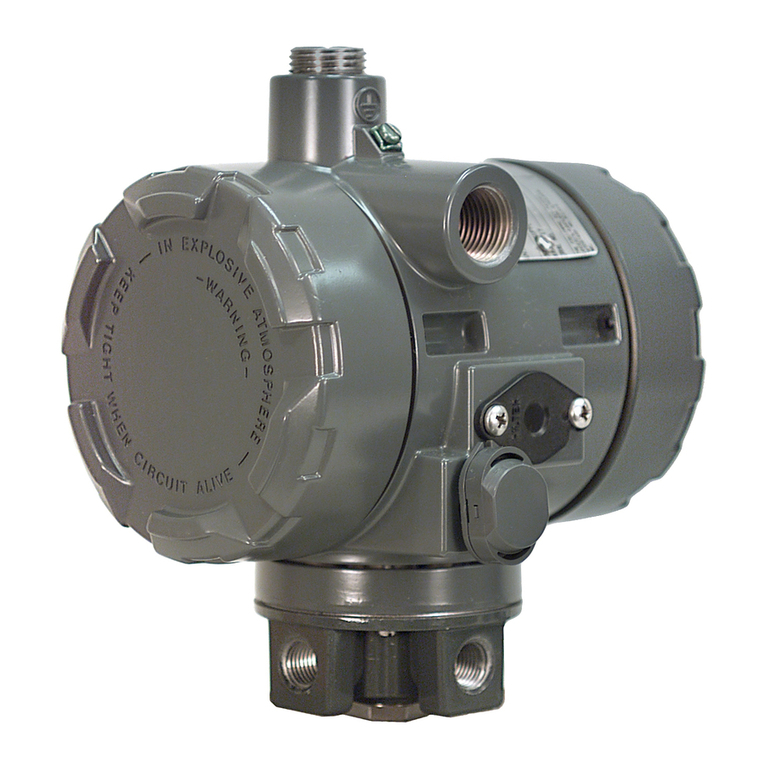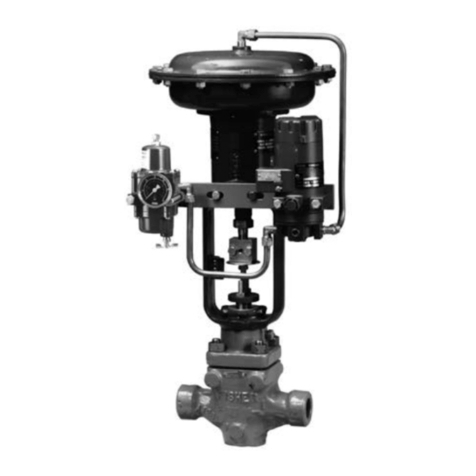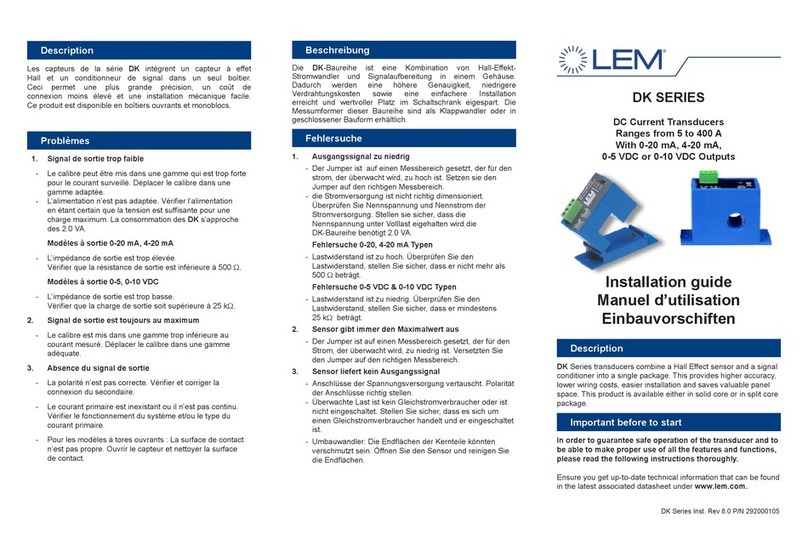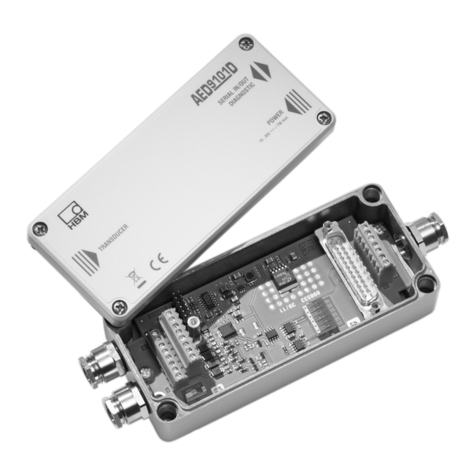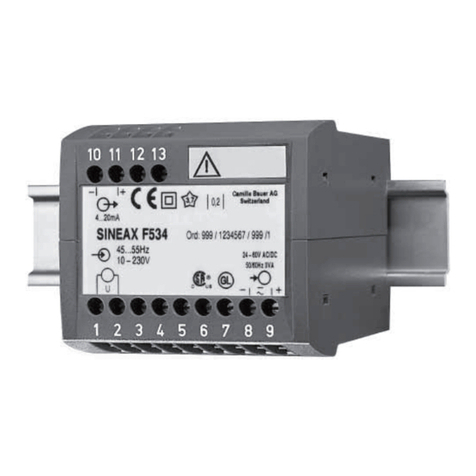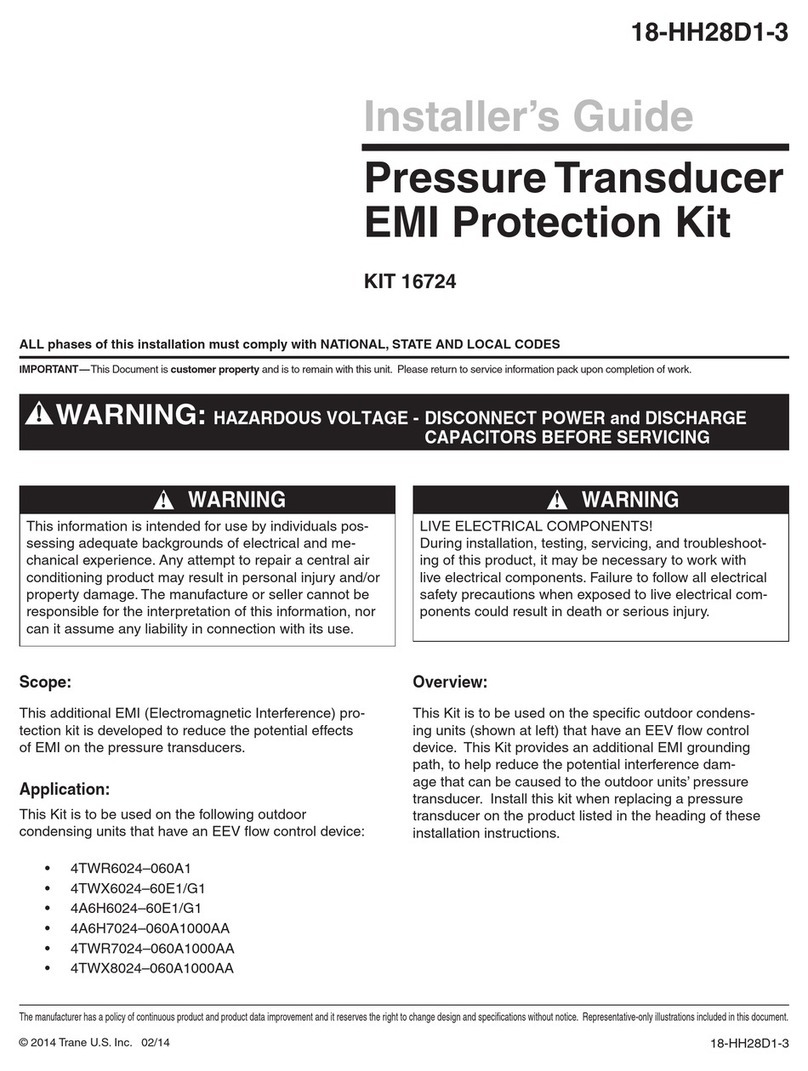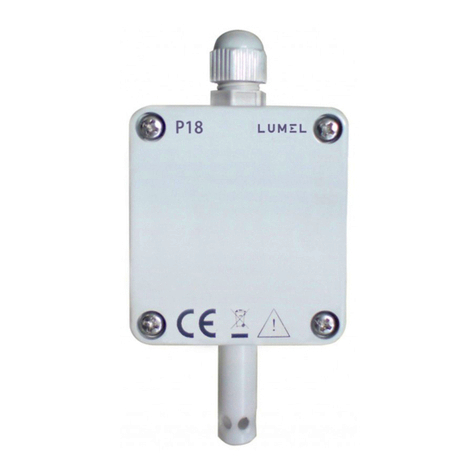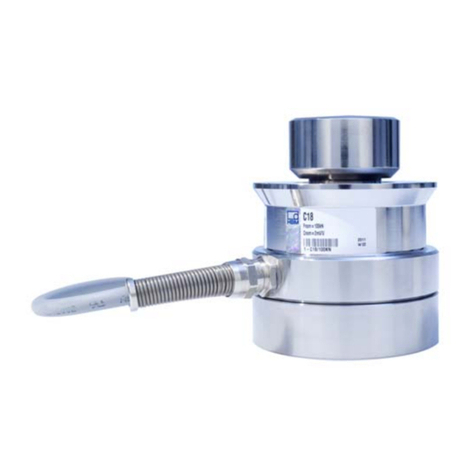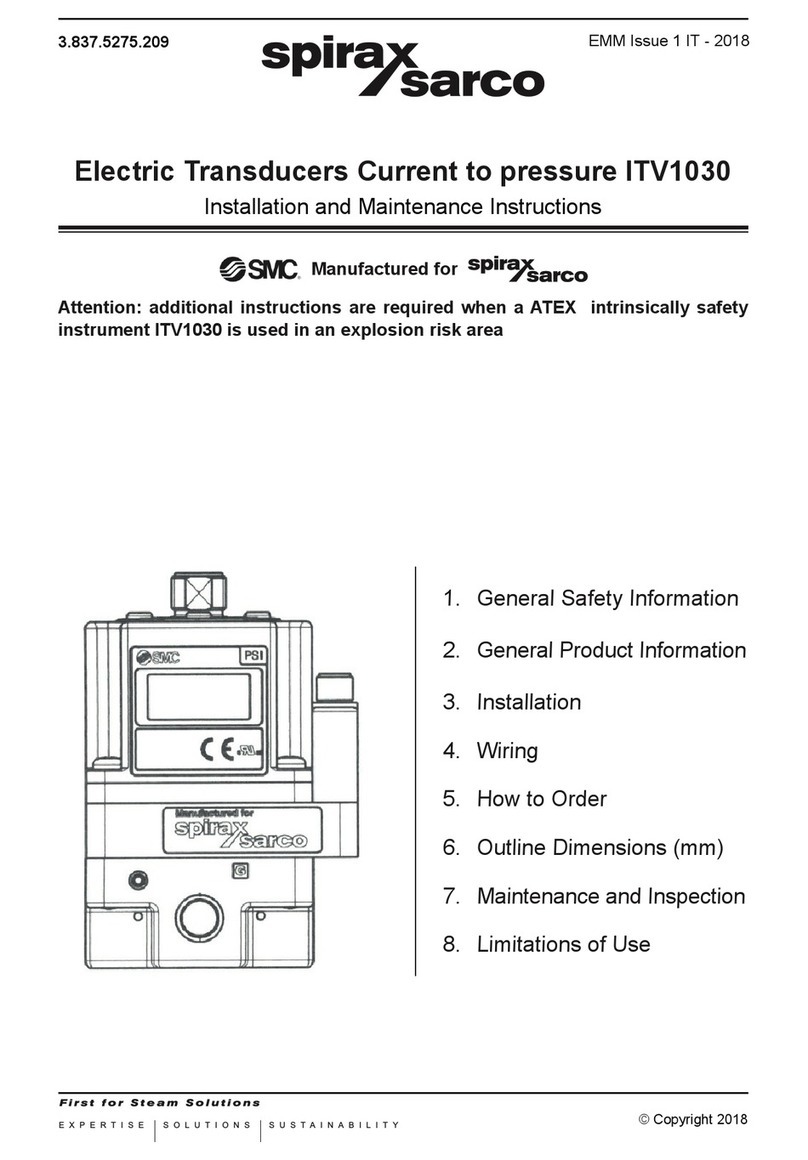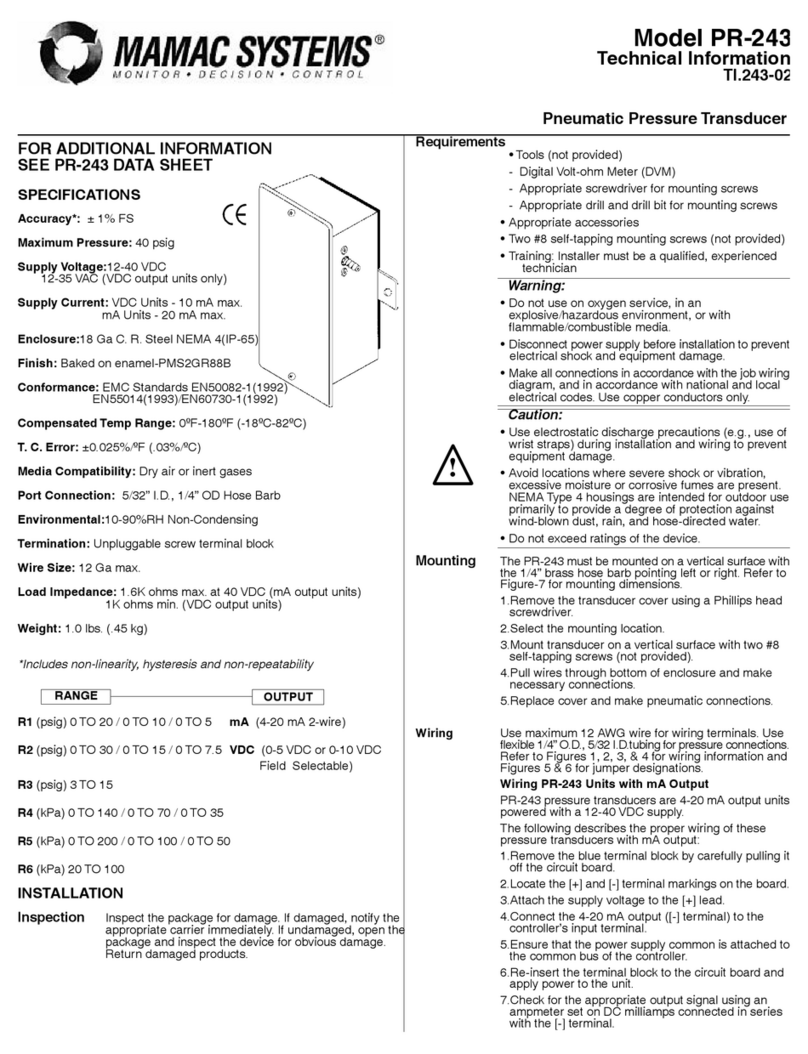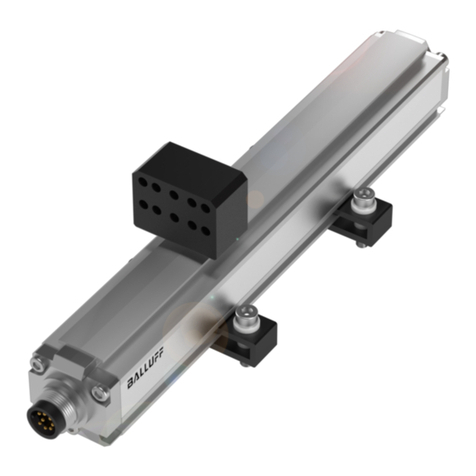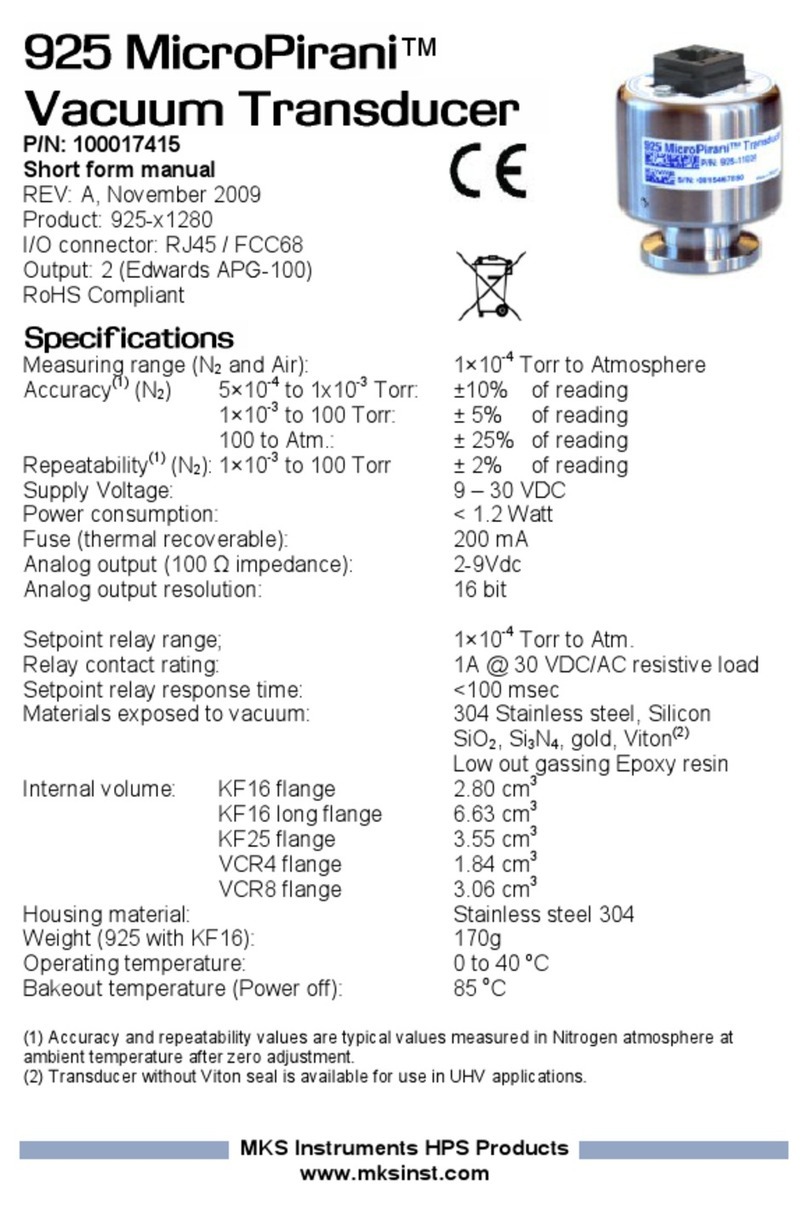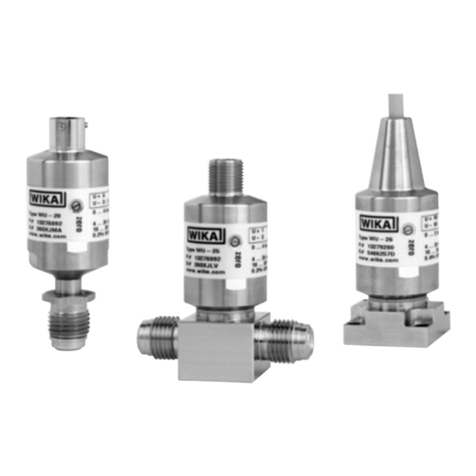
Instruction Manual
D102005X012
846 Transducer
February 2021
4
Table 1. Specifications (continued)
Performance (continued)(5)
Electromagnetic Interference (EMI): Tested per IEC
61326‐1:2013. Meets emission levels for Class A
equipment (industrial locations) and Class B
equipment (domestic locations). Meets immunity
requirements for industrial locations (Table A.1 in the
IEC specification document). Immunity performance
is shown in table 2.
Leak Sensitivity(4):Less than 1.0% of span for up to
4.8 m3/hr (180 scfh) downstream leakage.
Overpressure Effect: Less than 0.25% of span for
misapplication of up to 7.0 bar (100 psi) supply
pressure for less than 5 minutes to the input port.
Reverse Polarity Protection:
No damage occurs from reversal of normal supply
current (4 to 20 mA) or from misapplication of up to
100 mA.
Connections
Supply Air, Output Signal, and Output Gauge:
1/4‐18 NPT internal connection
Electrical: 1/2‐14 NPT internal conduit connection
Adjustments
Zero and Span: screwdriver adjustments located in
terminal compartment.
Remote Pressure Reading (RPR)
Jumper selectable, ON or OFF, if unit includes
option
Frequency Range: 0 to 10,000 Hz
Amplitude: 0.4 to 1.0 Vp‐p
Required Operating Voltage with Remote pressure
Reading Off
Min. 6.0 V (at 4 mA)
Max. 7.2 V (at 20 mA)
Required Operating Voltage with Remote Pressure
Reading On
Min 6.4 V (at 4 mA)
Max. 8.2 V (at 20 mA)
Electrical Classification
Hazardous area:
CSA C/US—Intrinsically Safe, Explosion-proof,
Non-Incendive
FM—Intrinsically Safe, Explosion-proof, Non-Incendive
ATEX—Intrinsically Safe, Flameproof, Type n
IECEx—Intrinsically Safe, Flameproof
Electrical Housing:
Tropicalization (Fungus test per MIL-STD-810)
CSA C/US—Type 4X
FM—Type 4X
ATEX—IP66(6)
IECEx—IP66(6)
Other Classifications/Certifications
CUTR— Customs Union Technical Regulations
(Russian, Kazakhstan, Belarus, and Armenia)
ESMA— Emirates Authority for Standardization and
Metrology - ECAS-Ex (UAE)
INMETRO—National Institute of Metrology, Quality,
and Technology (Brazil)
KGS—Korea Gas Safety Corporation (South Korea)
NEPSI— National Supervision and Inspection Centre
for Explosion Protection and Safety of
Instrumentation (China)
PESO CCOE— Petroleum and Explosives Safety
Organization - Chief Controller of Explosives (India)
Contact your Emerson sales office for
classification/certification specific information
Construction Materials
Housing: Low‐copper aluminum with polyurethane
paint, or 316 stainless steel
O‐Rings: Nitrile, except silicone for sensor O‐rings.
Options
Fisher 67CFR filter regulator, supply and output
gauges or tire valve remote pressure reading, module
cover with multiple stroke ports, stainless steel
housing, or stainless steel mounting bracket.
Weight
Aluminum: 2.9 kg (6.5 lb) excluding options
Stainless Steel: 6.7 kg (14.8 lb) excluding options
-continued-
